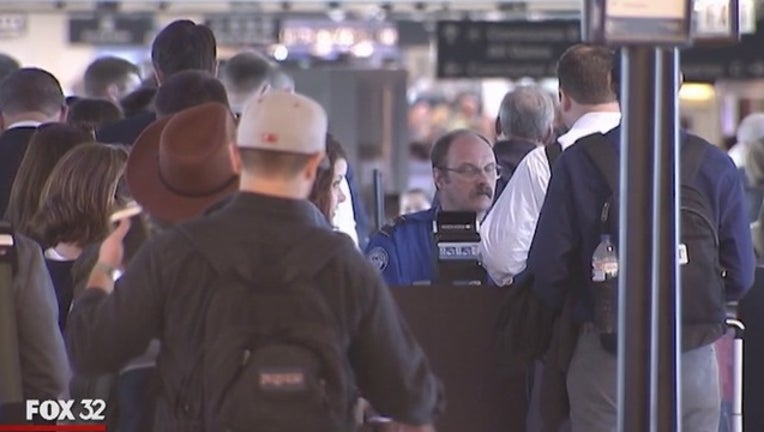TSA chief says progress being made on shortening lines

WASHINGTON (AP) - Significant progress has been made on shortening screening lines since earlier this spring, when airlines reported thousands of frustrated passengers were missing flights, the head of the Transportation Security Administration said Tuesday.
Over the busy Memorial Day weekend, 99 percent of passengers at U.S. airports waited less than 30 minutes and 93 percent waited less than 15 minutes in regular security lines, Peter Neffenger told a hearing of the Senate Homeland Security and Governmental Affairs Committee. In TSA Precheck lines for travelers who have received priority security vetting, 93 percent of passengers waited less than 5 minutes, he said.
The agency said it is reducing lines partly by adding more lanes and increasing staffing at peak periods, especially at seven of the nation's busiest airports: John F. Kennedy in New York, Newark in New Jersey, O'Hare in Chicago, Miami, Atlanta, Dallas-Fort Worth and Los Angeles.
"When you get stories of long wait times it has primarily been those airports," Neffenger said. "If you can prevent problems from happening there, you don't have problems that cascade throughout the system."
TSA also is exploring the possibility of adding automated screening technology at more than a dozen airports that can speed up lines by as much as 30 percent, he said. After TSA viewed the technology in operation at busy Heathrow Airport in London, Delta Air Lines helped pay for its installation in two screening lanes in Atlanta, he said. The new system, which went into operation in late May, has been such a success that TSA has created a special team to talk to other airlines and airports about installing the systems and going even further to add more automation, he said.
TSA also won praise from one of its fiercest critics, John Roth, the Department of Homeland Security's inspector general. TSA screeners overwhelmingly missed prohibited items in covert tests carried out by the inspector general's office, according to a highly critical report by Roth last year.
"I believe we are in a different place than we were last June," Roth told the Senate committee. Under Neffenger, TSA has acknowledged its security weaknesses and is beginning to come to grips with them instead of "fighting us every step of the way," he said.
"We are generally satisfied with the progress they are making, which is by no means complete," Roth said. Among his continuing concerns are that not enough is being done to protect against the "insider threat" of an airport worker or other persons who have access to airport restricted areas, he said.
There is "no holistic look at an airport worker who has unrestricted access to aircraft," Roth said. TSA continually checks to see if workers have been convicted of a crime, but doesn't go beyond that if there hasn't been a conviction, he said.
Also Tuesday, the House passed a bill that requires TSA to reassign "behavior detection" officers to security checkpoints and give local or regional TSA administrators more authority to make staffing decisions. Behavior detection officers look for suspicious individuals or activity at airports. Neffenger testified that he has already reassigned the officers.
The House bill, which was passed by a voice vote, would also permit TSA to use private marketing companies to encourage more passengers to sign up for the Precheck program. Precheck's purpose is to separate and expedite screening of low-risk passengers so screeners can spend more time on higher-risk passengers or passengers for whom there is no risk information.
___
Follow Joan Lowy at twitter.com/AP_Joan_Lowy. Her work can be found at http://bigstory.ap.org/content/joan-lowy
___
This story has been corrected to show that automated screening technology has been in use since late May, not two months.

